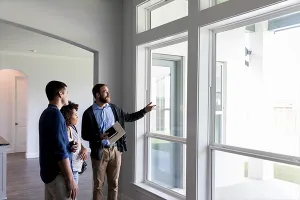1. Americans with Disabilities Act Lawsuit Reform
- Title III of the Americans with Disabilities Act (ADA) requires that public accommodations – including commercial establishments – be ADA compliant. Under the ADA, attorneys may collect fees related to pursuing claims of non-compliance, but plaintiffs do not collect damages. This has led to an increase in suits targeting easily-corrected infractions; owners often have a reasonable belief that the properties are in compliance with the law based on state and local inspections.
- In the 115th Congress, the House of Representatives passed a bill which would have added a notice-and-cure provision to the ADA, giving commercial property owners an opportunity to fix infractions before a lawsuit is filed, therefore redirecting resources from attorneys’ costs, court fees, and settlements, to resolving ADA violations in a timely manner. The bill did not gain traction in the Senate, however. NAR is part of a coalition dedicated to finding a solution which protects disability rights while reducing frivolous lawsuits, and will continue this work in the 116th Congress.
2. Energy Efficient Commercial Buildings Deduction (179D)
- Section 179D of the IRS Code allows commercial building owners who improve the building’s energy-efficiency to receive a deduction of up to $1.80/square foot in the year the upgrade goes into service (following proper certification). It is available for both new construction and retrofits, and does not favor any particular method of conserving or reducing energy use. Section 179D is not a permanent part of the tax code, and has been reauthorized several times. Most recently, in February 2018, Congress retroactively reauthorized it through 2017, allowing property owners to claim the deduction on their 2017 taxes filed that year. Unless Congress once again reauthorizes it retroactively to include 2018, the deduction will lapse, possibly permanently. NAR belongs to the 179D Coalition, and consistently advocates for Congress to make this deduction permanent, or, at least give it a long-term reauthorization.
3. Infrastructure
- Infrastructure improvements can positively impact property values, create livable communities, and enhance economic vitality, but poorly maintained infrastructure imposes opportunity costs and can negatively impact the local economy. In recent years, attention has been drawn to the lack of proper maintenance of U.S. infrastructure, from roads and bridges to mass transportation and broadband access. Despite agreement that this is a pressing issue, Congress has not passed a large-scale infrastructure bill.
- NAR supports spending for infrastructure and believes funds should be sufficient to maintain the current physical condition and level of performance of highways and transit systems while making improvements to reduce congestion and foster economic growth. Infrastructure investment should consider all transportation users, and should be allinclusive so that critical systems, such as water or ports, are also prioritized while maintaining a community’s infrastructure.
4. National Flood Insurance Program
- The National Flood Insurance Program (NFIP) had several short-term extensions in 2018, ranging from several months to just one week. NAR works closely with Congress and FEMA to ensure that the program does not lapse, and has advocated for reforms to improve it and make it more responsive to commercial real estate needs. These include improved mapping utilizing “3DEP” technology, a voluntary “opt-out” for commercial properties that are able to obtain the necessary coverage from private insurers, and 180 days of a sale into an “Opportunity Fund” are tax-deferred until the end of 2026 or their interest in the Fund is sold, whichever comes first. (An Opportunity Fund is a vehicle created for the purpose of investing into QOZs, required by the law; there are specific requirements for their certification.) If an investment is held for five years, the capital gains tax ultimately owed on it is reduced by 10%; if held for seven years, it is reduce by 15%. Additionally, gains that accrue on investments that are held at least ten years are tax-free.
- Proposed rules for the QOZ program were released in October 2018, with at least one more round expected. The White House issued an Executive Order in December 2018 creating a cross-agency council with the purpose of coordinating federal revitalization programs, including QOZs, across federal agencies. NAR belongs to two industry coalitions focusing on QOZs, which were a featured topic at the November 2018 REALTORS® Conference & Trade Expo.
5. Qualified Business Income Deduction (Section 199A)
- The Tax Cuts and Jobs Act of 2017 includes a 20% deduction from the net of business income in sole proprietors and owners of S corporations, LLCs, or partnerships. This can greatly reduce federal taxes, but is complex for many. For example, it is unclear whether owners of rental real estate will be able to claim the deduction. NAR has commented to the IRS on the deduction, urging that it be available to real estate brokers. The IRS proposed rules state that real estate brokers will be eligible for the deduction, reflecting NAR’s comment letter request. NAR also sent a comment letter asking that all rental property activity be eligible for the deduction, and testified at an IRS hearing on the issue in October 2018. NAR will continue to work to ensure that the deduction is available to all real estate agents and brokers and that its application to income from rental real estate is straightforward.
6. Qualified Opportunity Zones
- The Qualified Opportunity Zones (“QOZ”) program, created by the Tax Cuts and Jobs Act of 2017, provides tax incentives for investing in under-served communities designated as “Opportunity Zones.” The Treasury finalized the designations in 2018. Capital gains reinvested within NAR belongs to the Coalition to Insurance Against Terrorism (CIAT), comprised of commercial real estate industry groups. The Treasury has conducted multiple studies on the effectiveness of the program, which NAR and CIAT submitted comments to in support of the program. NAR will work with the 116th Congress to ensure that the program is reauthorized and continues to protect access to this important insurance coverage.
7. Terrorism Risk Insurance Program
- The Terrorism Risk Insurance Program (TRIP) was created in 2002, following the terrorist attacks of September 11, 2001, and the subsequent lack of affordable terrorism insurance. Absent terrorism insurance, many commercial properties were in technical default of their loans, and new lending slowed. The program provides a federal backstop, triggered if a terrorist attack (certified by the Treasury) exceeds a certain amount of damages ($200 million). The government has a share in losses above that point, and there is a mandatory recoupment from private insurers. The overall effect is that terrorism insurance is affordable and available for those who need it. It has been reauthorized several times, most recently in 2015 for six years (through 2020).
8. Waters of the U.S. Rule
- The Clean Water Act (CWA) regulates “navigable” waters, and the Obama Administration’s Waters of the U.S. (“WOTUS”) rulemaking was designed to broaden it, including many more U.S. waters under federal jurisdiction. Finalized in 2015, it was never fully implemented due to a federal court ruling to stay the rule. President Trump issued an Executive Order in 2017 directing the EPA to rescind WOTUS and replace it with a rule providing a definition of “waters of the U.S.” to protect water quality while alleviating unnecessary regulatory burdens on development. To that end, the EPA and Army Corps of Engineers recently released a proposed rule with a clear definition of waters in the U.S. However, other court decisions have complicated the issue, and currently about half the states are required to implement the Obama WOTUS rule. NAR has consistently advocated in Congress and the federal agencies for the WOTUS rule to be withdrawn and replaced with a rule protecting water quality without unnecessarily hampering development and intruding on private property rights.








